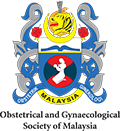ICOE Guru’s Chops
Trainer Nina
“Shoulder Dystocia in Mandarin?”
After signing up for ICOE China, I had butterflies in my stomach. It’s my first ICOE and the program would be conducted in Chinese. Mandarin is my mother tongue; however, I had never been exposed to Chinese medical terminology. I did not even know how to translate ‘shoulder dystocia’ into Mandarin. All trainers shared the same worry. For every topic, we translated the medical jargon, formulated our sentences and paired up to practise speaking medical colloquies in Mandarin. Our trainer manuals were full of scribbles in Chinese characters. I felt like I was practising for Part 3 MRCOG exam.
My initial concern about my unproficiency in Mandarin turned out to be unnecessary. The participants were very understanding and helpful. When I was tongue-tied, they would fill in the gap spontaneously. I was very delighted to discover that they were familiar with the common English medical jargon such as ‘McRoberts’, ‘Wood screw’ and the shoulder dystocia management flowchart is similar in China. I also learnt the local common terminology such as ‘wash face method’ to describe ‘sweep the hand across the chest’ for
delivery of posterior arm. The learning process was certainly bidirectional.
One of the highlights was the force feedback using the Prompt Flex model. It was interesting to discover that the senior obstetricians tend to exert stronger force than the registrars. The participants were amazed by how little force was actually needed during traction to reach 100 Newton. They repeatedly practise to get a feel for what the appropriate level of force felt like. Most of them decided to purchase the simulator for their centre for future training.
Teaching shoulder dystocia in China was challenging but truly rewarding and memorable.


